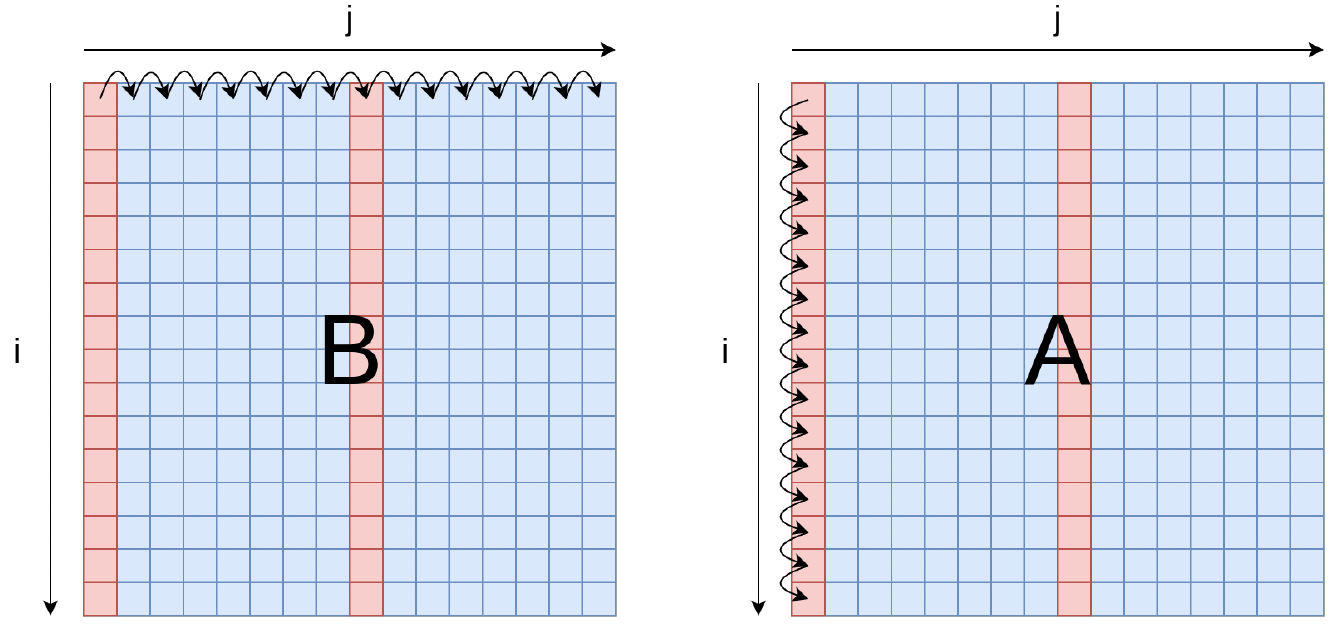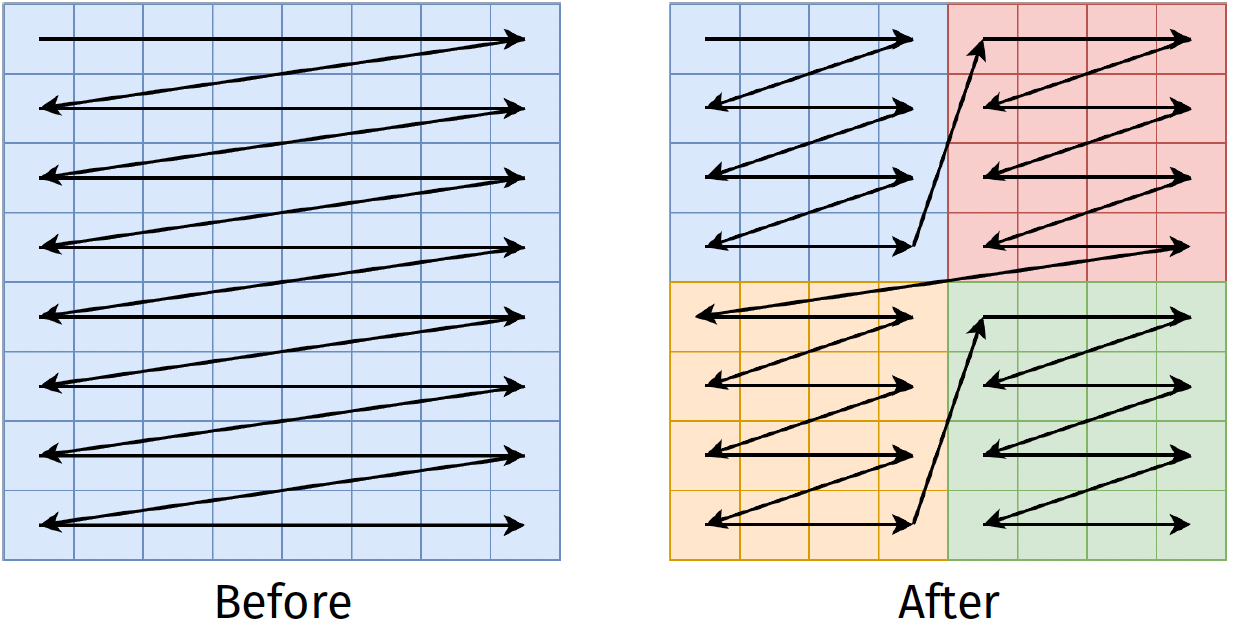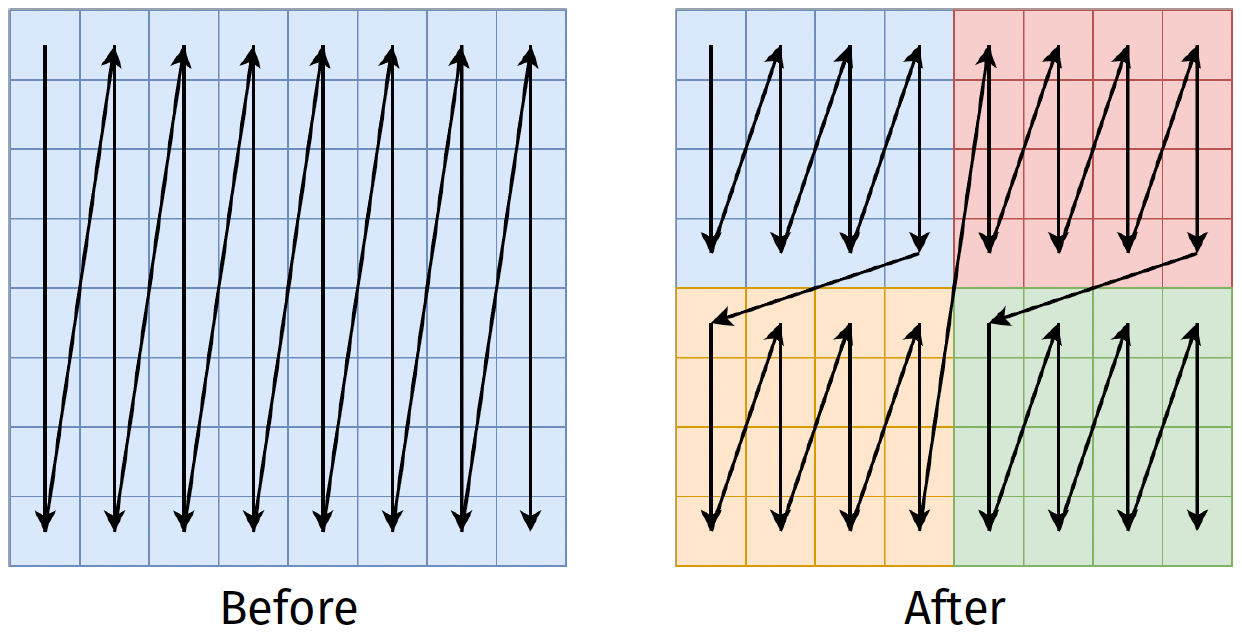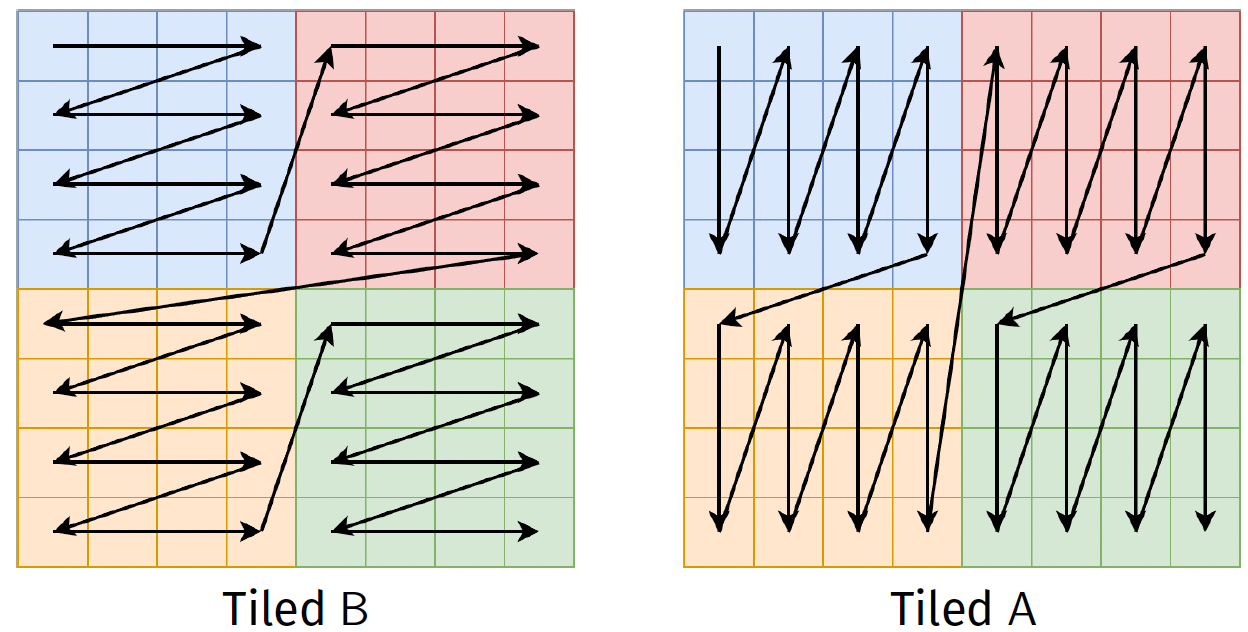PO Lecture 6 Cache blocking & tiling
PO Lecture 6 Cache blocking & tiling
PO Lecture 6 Cache blocking & tiling
Computing the matrix transpose
Given N-by-N matrices A and B, we can compute
$B_{ij} \leftarrow A_{ji}$
with
1
2
3
4
5
double *A, *B;
...
for (int i = 0; i < N; i++)
for (int j = 0; j < N; j++)
B[i*N + j] = A[j*N + i];
What is the performance of this code?
Matrix transpose: simple performance model
- N² stores
- N² loads
- no computation
What do you expect?
Load vs. Store
- Are loads and stores affected by cache locality in the same way?
No - For loads we mainly want to increase cache hits
- For stores, it is important due to cache coherence and depends on the writing policy
- It may be interesting to read more on non-temporal stores, e.g. here.
| Matrix size | bandwidth [GB/s] | | :———: | :————–: | | 128 × 128 | 22 | | 256 × 256 | 13 | | 512 × 512 | 13 | | 1024 × 1024 | 5 | | 2048 × 2048 | 1.6 | | 4096 × 4096 | 0.9 |
What went wrong?
1
2
3
for (int i = 0; i < N; i++)
for (int j = 0; j < N; j++)
B[i*N + j] = A[j*N + i];
- Contiguous access to
B, stride-N access toA - If both matrices fit in cache, a reasonable model could be
$T_{cache} = N^2(t_{read} + t_{write})$ - Reads of A load a full cache line, but use only 8 bytes:
$T_{mem} = N^2(8t_{read} + t_{write})$
A picture
Cache locality
- Matrices are stored by rows
- Cache line size is L
- A has strided access
- We need LN/8 cache to get reuse
- We can reorder the iterations to preserve spatial locality
Idea
- Break loop iteration space into blocks
- strip mining
- loop reordering
Strip mining
Before
- actually faster
1
2
for ( int i = 0; i < N; i++ )
A[i] = f(i);
After
1
2
3
for ( int ii = 0; ii < N; ii += stride)
for ( int i = ii; i < min(N, ii + stride); i++)
A[i] = f(i);
Mostly useful for nested loops
Strip mining nested loops
Before
1
2
3
for (int i = 0; i < N; i++)
for (int j = 0; j < N; j++)
B[i*N + j] = A[j*N + i];
After
1
2
3
4
5
for (int ii = 0; ii < N; ii += stridei)
for (int i = ii; i < min(N, ii+stridei); i++)
for (int jj = 0; jj < N; jj += stridej)
for (int j = jj; j < min(N, jj+stridej); j++)
B[i*N + j] = A[j*N + i];
Reordering loops
After permuting i and jj loops
1
2
3
4
5
for (int ii = 0; ii < N; ii += stridei)
for (int jj = 0; jj < N; jj += stridej)
for (int i = ii; i < min(N, ii+stridei); i++)
for (int j = jj; j < min(N, jj+stridej); j++)
b[i*N + j] = a[j*N + i];
- Two free parameters
strideiandstridej - Need to choose according cache hierarchy
- Ideally block for L1, L2, L3
- The extra logic adds some overhead
Iteration over B
Iteration over A
Comparison
Exercise 7: Tiled matrix transpose
- Split into small groups
- Download the two versions of the code
- Measure bandwidth as matrix size changes
- Try different tile sizes
- Ask questions!
This post is licensed under CC BY 4.0 by the author.



